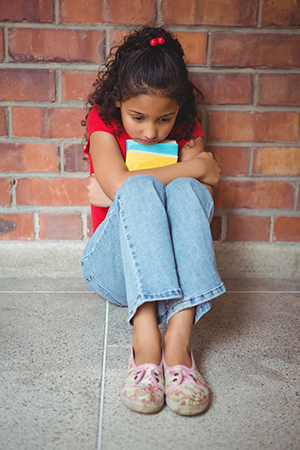 Information from StopBullying.gov
Information from StopBullying.gov
The roles kids play in bullying are not limited to those who bully
others and those who are bullied. Some researchers talk about the
“circle of bullying” to define both those directly involved in bullying
and those who actively or passively assist the behavior or defend
against it.
Direct roles include:
Kids Who Bully: These children engage in bullying behavior
toward their peers. There are many risk factors that may contribute to
the child’s involvement in the behavior. Often, these students
require support to change their behavior and address any other
challenges that may be influencing their behavior.
Kids Who Are Bullied: These children are the targets of
bullying behavior. Some factors put children at more risk of being
bullied, but not all children with these characteristics will be
bullied. Sometimes, these children may need help learning how to respond
to bullying.
Even if a child is not directly involved in bullying, they may be
contributing to the behavior. Witnessing the behavior may also
affect the child, so it is important for them to learn what they should
do when they see bullying happen. Roles kids play when they witness
bullying include:
Kids Who Assist: These children may not start the
bullying or lead in the bullying behavior but serve as “assistants” to
children who are bullying. These children may encourage the bullying
behavior and occasionally join in.
Kids Who Reinforce: These children are not directly
involved in the bullying behavior but they give the bullying an
audience. They will often laugh or provide support for the children who
are engaging in bullying. This may encourage the bullying to continue.
Outsiders: These children remain separate from the
bullying situation. They neither reinforce the bullying behavior nor
defend the child being bullied. Some may watch what is going on but do
not provide feedback about the situation to show they are on anyone’s
side. Even so, providing an audience may encourage the bullying
behavior.
Most kids play more than one role in bullying over time. In some cases,
they may be directly involved in bullying as the one bullying others or
being bullied, and in others, they may witness bullying and play an
assisting or defending role. Every situation is different. Some kids are
both bullied and bully others.
Children More Likely to Bully Others
There are two types of kids who are more likely to bully others:
- Some are well connected to their peers, have social power, are
overly concerned about their popularity, and like to dominate or be in
charge of others. - Others are more isolated from their peers and may be depressed
or anxious, have low self-esteem, be less involved in school, be easily
pressured by peers, or not identify with the emotions or feelings of
others. - Children who have these factors are also more likely to bully others:
- Are aggressive or easily frustrated
- Have less parental involvement or having issues at home
- Think badly of others
- Have difficulty following rules
- View violence in a positive way
- Have friends who bully others
Remember, those who bully others do not need to be stronger or bigger
than those they bully. The power imbalance can come from a number of
sources—popularity, strength, cognitive ability—and children who bully
may have more than one of these characteristics.
If you suspect a child of being bullied, contact a teacher,
principal, or school counselor, or call the U.S. Department of Health
bullying hotline at 1-800-273-TALK (8255). For more information about
bullying, prevention, and how to get help, visit www.stopbullying.gov.

